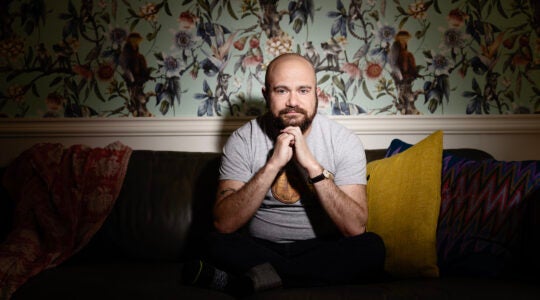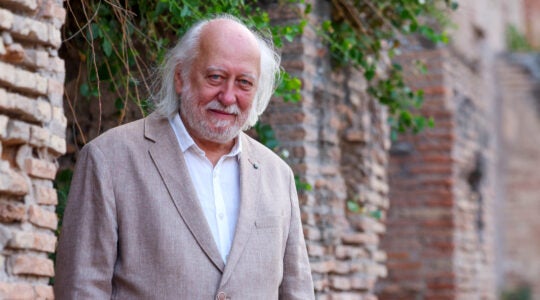Though I’d prefer not be bothered to comment on the latest narishkeit from New York Times columnist Roger Cohen, I’ve been urged to do so by readers. So here goes, after a taste of Cohen’s latest missive. He writes:
Little has changed in 20 years. After Bush 41 and Baker, we got Clinton’s love affair with Yitzhak Rabin (“I had come to love him as I had rarely loved another man”); the disintegration of Oslo after Rabin’s tragic assassination; and the Israel-can-do-no-wrong policy of Bush 43.
Balance — the credential no honest broker can forsake — vanished from American diplomacy.
I don’t believe that’s been good for Israel. The Jewish state needs to be challenged by its inseparable ally if it is to achieve the security it craves…
I said little has changed in two decades. But some things have. The wall-fence has gone up, putting some 10 percent of West Bank land on the Israeli side of the barrier. The Israeli settler population of the West Bank has more than tripled to some 300,000. A network of garrison-like settlements, roadblocks and settler-only highways has built Palestinian humiliation into the very fabric of what Baker called “Greater Israel.”
Here are a few things that have changed in 20 years, which Cohen has left out:
- Israel and Jordan signed a peace treaty in 1994 that has withstood the test of time.
- Israel unilaterally ended its occupation of southern Lebanon in 2000.
- The only credible pan-Palestinian leader the Palestinian movement ever had, the late Yasser Arafat, rejected Israel’s offer of de-facto statehood on about 95 percent of the West Bank, at Camp David in 2000.
- Unsatisfied with Israel’s offer, Arafat launched a Palestinian campaign of terrorism against Israelis in late 2000. The campaign was brought to a halt about two years later due to a combination of aggressive Israeli military tactics, including assassinations of Palestinian leaders, and the erection of the West Bank security fence.
- U.S. President George W. Bush endorsed the creation of a Palestinian state, something Israeli prime ministers Yitzhak Rabin and Ehud Barak already had done.
- Longtime hawk Ariel Sharon, as prime minister, endorsed the creation of a Palestinian state. His successor, Ehud Olmert, followed suit.
- Israel withdrew its troops and settlers from the Gaza Strip in 2005, unilaterally ending its occupation there (then-prime minister Sharon believed there was no viable Palestinian partner for peace). Olmert hoped to do the same in the West Bank, until he learned the lesson of the Hezbollah-Israel war in 2006.
- Six years after Israel’s unilateral withdrawal from southern Lebanon, Hezbollah fired some 4,000 rockets into northern Israel during a 34-day war in 2006. The Israel Defense Forces failed to bring a halt to the rocket fire.
- A militarized Palestinian state supported by Iran emerged on Israel’s doorstep in 2007, when Hamas routed the more moderate Fatah faction from Gaza and took control of the strip. The seizure followed Hamas’ victory in Palestinian legislative elections a year earlier.
- After eight years of increasing rocket fire from Gaza into Israel, the IDF conducted a broad offensive in Gaza to curtail rocket fire from the strip. During the three-week war, Hamas’ rockets reached as far east as Beersheva and as far north as Ashdod and Kiryat Gat.
- In polls this decade, a majority of Israelis consistently expressed support for the creation of a Palestinian state.
- The Palestinian polity has failed to come up with a leader (or leadership) willing and able to deliver on a peace deal with Israel.
- Despite Israel’s incessant warnings, Iran has moved closer to nuclear weapons capability, sapping Israelis’ willingness to rely on guarantees of security from other countries.
JTA has documented Jewish history in real-time for over a century. Keep our journalism strong by joining us in supporting independent, award-winning reporting.





